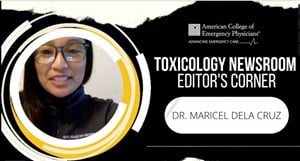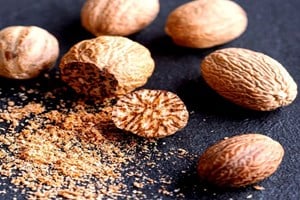
Lower APAP Concentration = higher incidence of Nac Anaphylactoid reactions
Background
Untreated acetaminophen (APAP) toxicity has severe consequences, such as severe liver injury, acute liver failure, and death. Fortunately, N-acetylcysteine (NAC) can significantly reduce the risk of liver injury when used appropriately and early after a toxic ingestion.1 NAC has a direct antioxidant effect by stimulating the synthesis of glutathione, modulates the effect on the proinflammatory cytokine response, and acts as a sulfur donor to increase metabolism of APAP to a nontoxic metabolite.1 However, NAC is not completely benign, and indications for initiation should be carefully considered. Anaphylactoid reactions are a well-recognized adverse event that occurs in 14-50% of patients.2 Multiple studies have demonstrated an inverse correlation between APAP serum concentration and the development of anaphylactoid reactions to intravenous NAC.2–5 These reactions are more common in patients with lower serum concentrations (~25% if APAP is < 150 mcg/mL) than in those with higher APAP concentrations (~3% if APAP is > 300 mcg/mL).3 The mechanism behind this phenomenon is poorly understood.
The Reaction
Anaphylactoid reactions to NAC are characterized by cutaneous (erythema, urticaria, flushing,) or systemic (bronchospasm, wheezing, hypotension) effects and usually occur within the first few hours of treatment, correlating with high concentrations of drug.6 These reactions are believed to be mediated by non-IgE-mediated histamine release by mast cells; this theory is supported by the use of histamine antagonists, such as diphenhydramine, to mitigate the reaction. Pakravan and colleagues found a direct relationship between histamine levels and reaction severity without an increase in serum tryptase or inflammatory cytokines.5 Non-mast cell sources of histamine may also include basophils and neutrophils.6 NAC may also evoke endothelium-independent vasodilation, possibly due to a direct relaxant effect on vascular smooth muscle. NAC has also been shown to stimulate free radical generation, which might contribute to acute inflammation in anaphylactoid reactions.6
Is APAP Protective?
- Coulson and Thompson demonstrated that NAC is capable of increasing histamine secretion from a human mast cell line and ex vivo human mononucleocytes. After incubation with acetaminophen, histamine secretion was reduced by both cell types in vitro.7
- Glutathione plays an important role in the generation of free radicals and oxidative stress by NAC. In a toxic acetaminophen overdose, suppression of anaphylactoid reactions might be a marker of glutathione depletion along with downregulation of the inflammatory cascade and suppression of cytokines.3,8,9
- Acetaminophen is also capable of inhibiting cyclooxygenase and may lessen inflammation. Therapeutic amounts weakly inhibit COX. COX/prostaglandin E2 are inflammatory mediators and may play a role in anaphylactoid reactions to NAC.3,10
The Bottom Line
If given within 8 hours of an acute ingestion, NAC is estimated to be nearly 100% hepatoprotective. For acute ingestions, take the time to obtain an appropriate 4-hour serum concentration before empirically initiating NAC and potentially predisposing your patient to unnecessary treatment - it isn’t without risks and may prolong their time-to-medical clearance. For chronic ingestions or late presenters, NAC is often administered empirically; while appropriate, consider that these patients are at a higher risk for anaphylactoid reactions by virtue of having lower serum APAP concentrations. If the reaction occurs, administer diphenhydramine and restart the infusion at a slower rate 1 hour later.1 If the reaction worsens or continues, failure of IV NAC is an indication for oral NAC, which has a very low risk of anaphylactoid reactions.1
References:
- Hendrickson RG, Howland M. N-Acetylcysteine. In: Hoffman RS, Howland MA, Lewin NA, Nelson L, Goldfrank LR, Flomenbaum N, editors. Goldfrank’s toxicologic emergencies. New York: McGraw-Hill Education; 2019.
- Schmidt LE. Identification of patients at risk of anaphylactoid reactions to N-acetylcysteine in the treatment of paracetamol overdose. Clin Toxicol 2013;51(6):467–72.
- Waring WS, Stephen AF, Robinson OD, Dow MA, Pettie JM. Lower incidence of anaphylactoid reactions to N-acetylcysteine in patients with high acetaminophen concentrations after overdose. Clin Toxicol 2008;46(6):496–500.
- Yarema M, Chopra P, Sivilotti MLA, et al. Anaphylactoid Reactions to Intravenous N-Acetylcysteine during Treatment for Acetaminophen Poisoning. J Med Toxicol 2018;14(2):120–7.
- Pakravan N, Waring WS, Sharma S, Ludlam C, Megson I, Bateman DN. Risk factors and mechanisms of anaphylactoid reactions to acetylcysteine in acetaminophen overdose. Clin Toxicol 2008;46(8):697–702.
- Sandilands EA, Bateman DN. Adverse reactions associated with acetylcysteine. Clin Toxicol 2009;47(2):81–8.
- Coulson J, Thompson JP. Paracetamol (acetaminophen) attenuates in vitro mast cell and peripheral blood mononucleocyte cell histamine release induced by N-acetylcysteine. Clin Toxicol 2010;48(2):111–4.
- Dimova S, Hoet PHM, Dinsdale D, Nemery B. Acetaminophen decreases intracellular glutathione levels and modulates cytokine production in human alveolar macrophages and type II pneumocytes in vitro. Int J Biochem Cell Biol 2005;37(8):1727–37.
- Mukherjee TK, Mishra AK, Mukhopadhyay S, Hoidal JR. High Concentration of Antioxidants N -Acetylcysteine and Mitoquinone-Q Induces Intercellular Adhesion Molecule 1 and Oxidative Stress by Increasing Intracellular Glutathione. J Immunol 2007;178(3):1835–44.
- Zyoud SH, Awang R, Sulaiman SAS, et al. Relationship between Serum Acetaminophen Concentration and N-Acetylcysteine-Induced Adverse Drug Reactions: SERUM ACETAMINOPHEN CONCENTRATION AND ADVERSE DRUG REACTIONS. Basic Clin Pharmacol Toxicol 2010;107(3):718–23.
Elisabeth Carroll, PharmD
PGY2 Emergency Medicine Pharmacy Resident, University of Iowa Hospitals & Clinics



